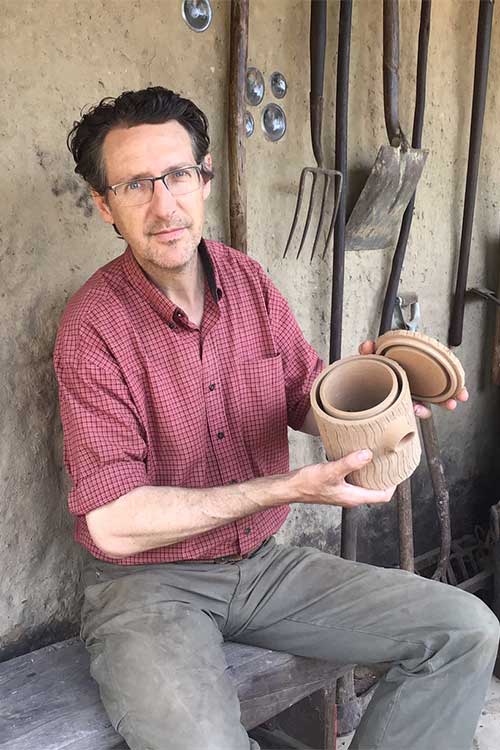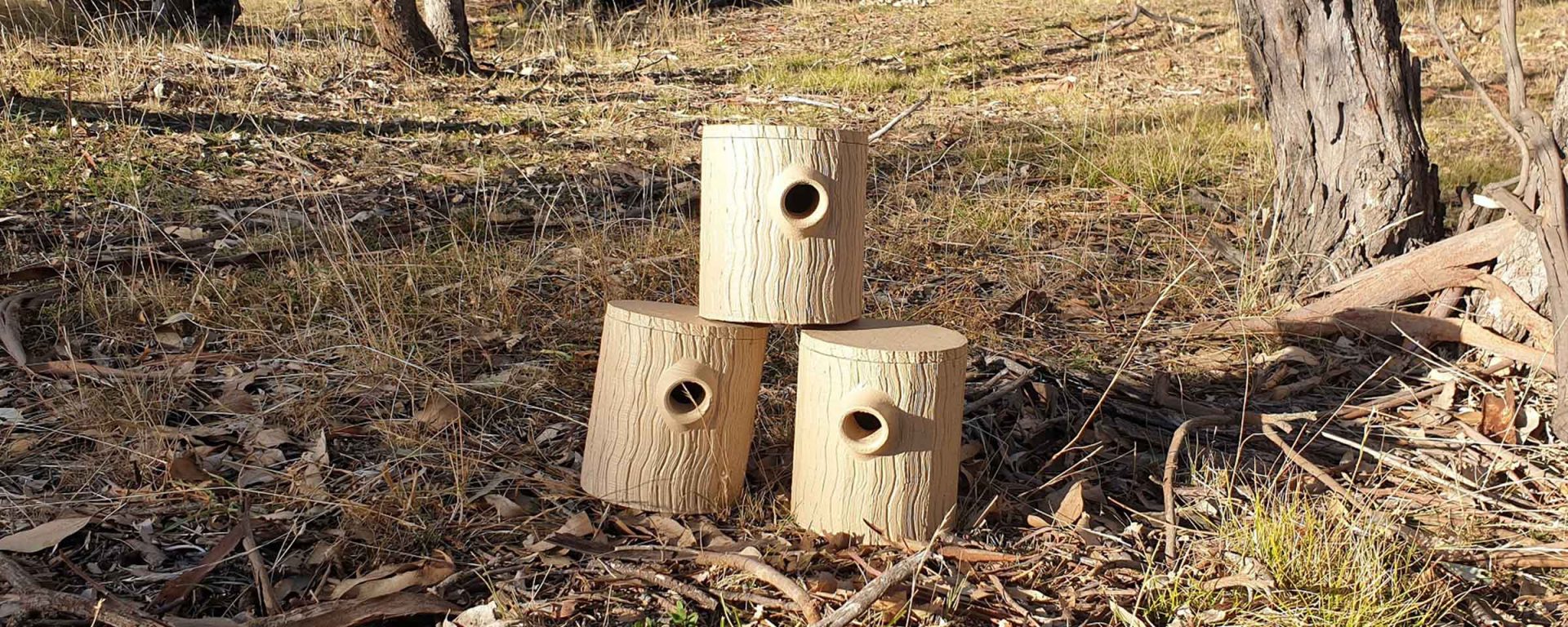University wildlife research has led to a revolutionary breakthrough that’s helping house Australian fauna. Researchers from Charles Sturt University have proven 3D printing technology can be used to create new habitats for native species!
With the world getting warmer and bushfires raging, have you ever thought about native animals struggling to find a home? Gliders, parrots, owls, even ducks use hollow branches as cool, safe places to raise a family. But as big trees become rarer, our Australian wildlife start to run out of options.
That’s when the Charles Sturt team – a mix of people from the Institute for Land, Water and Society and engineering department – put their heads together and started to think (wait for it…) outside the box! The nesting box, that is.
The world starts to heat up
Many wildlife species already struggle with habitat loss, given climate conditions are becoming hotter and drier. Places where animals used to live are becoming uninhabitable. Then bushfires ripped through Australia in early 2020.
The scale of the damage to wildlife was catastrophic according to an interim report by the World Wide Fund for Nature. Charles Sturt Associate Professor in Ecology and member of the ILWS, Professor Dale Nimmo helped compile the report. Here’s what it said.
Killed or displaced nationwide were:
- 143 million mammals
- 2.46 billion reptiles
- 180 million birds
- 51 million frogs.
To Professor Nimmo, the figures are an indication of the unprecedented scale of the fires.
“You can measure these fires in hectares. But it’s difficult for people to understand how a disturbance of that size affects our native wildlife. How many animals lived within the 12 million hectares of Australian bush that burned?”
Professor Dale Nimmo
“That it approaches three billion simply reinforces the fact that the last fire season has reshaped Australia’s ecology over vast areas.”
University wildlife research was ready to lend a hand
Fortunately, Charles Sturt’s study into artificial nesting hollows using 3D printing was ready to help.

For lead researcher and ecologist Professor David Watson, this project represents a revolution in nest box design. It will have significant, long-term impacts for Australia’s hollow-dependent animals – with many losing their habitat in the bushfires.
Professor Watson knows our plants and animals often face threats – from urban construction to climate change.
“Historic land clearing has dramatically reduced numbers of big hollow-bearing trees across Australia. Then with the bushfires, natural hollows became rare across entire regions. They are in very high demand.
“This project responds to the challenge of climate change. Developing innovative ways to make homes for wildlife that can handle climatic extremes, from summer heatwaves to winter cold snaps.
Professor David Watson
“We’re trying all kinds of different approaches to rebuild wildlife populations. So, large-scale installations of nest boxes and other artificial structures are crucial for all hollow nesting species. From teeny tiny pardalotes to whopping big owls.”
Hollows and nest boxes
Charles Sturt Honours student and member of Professor Watson’s university wildlife research team, Mick Callan knows natural hollows can take between 80 and 100 years to form. But they are vital for Australian wildlife.
“Hollows in trees are critical for animals worldwide. They use them for nesting, resting and food. In Australia, tree hollows provide important habitat for more than 15 per cent of vertebrate fauna, as well as various insects and other invertebrates.
“Because hollows take so long to form, many animals now increasingly rely on nest boxes and other artificial structures placed in trees by well-meaning people.
“However, the effectiveness of wooden nest boxes – as even a short-term solution – is questioned. This is due to short lifespan (they typically last eight to 10 years), high variation in microclimate, limited understanding of animal requirements, poor design, and the need for ongoing maintenance.”
Out of the box
So, the wildlife research team developed, field tested and manufactured different 3D-printed plastic tree hollows for use in Australian conditions.

Professor Watson explains the plastic hollows created by the researchers closely mimic the thermal properties, longevity and internal dimensions of natural tree hollows. That means they’ll provide more suitable homes for native animals.
“The beauty of 3D printing is adaptability. That flexibility, coupled with the double-walled insulated construction, makes these nest boxes the best thing since sliced bread for our imperilled wildlife.
Professor David Watson
“By mimicking naturally occurring structures and using new technology to make structures that can be integrated into buildings, streetlights and other parts of the built environment, we are helping Australian wildlife adapt to changing climates.”
A design patent has been granted for the researchers’ innovative hollow design. Now, commercial production, using 100 per cent recycled plastics, can begin.




You can make a difference
Our natural landscapes and wild ecosystems are under pressure like never before. Play your part with an environmental science degree from Charles Sturt University. From undergraduate courses to university wildlife research degrees, however you want to make a difference, you can here.



You must be logged in to post a comment.